Experience
KMJ Consulting, Inc. has rich experience in transportation engineering, outreach and software and systems training, testing and support. Below are some of KMJ’s past and ongoing projects.
Transportation Engineering
Pennsylvania Department of Transportation D6 Highway Safety Improvement Program (HSIP)
American Street Improvement Project – Design
City of Philadelphia TEDS Citywide 105 Preliminary Design, ADA Ramp Design
City of Philadelphia Roosevelt Boulevard Multimodal Corridor Program
Amtrak 30th Street Station Master Plan
PennDOT District 6 – I-95 Central and South Philadelphia Project
Pennsylvania Department of Transportation D6 Highway Safety Improvement Program (HSIP)
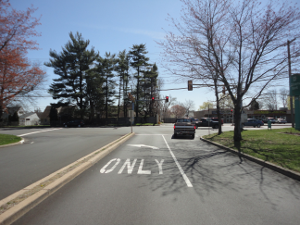
PennDOT District 6-0 seeks innovative low-cost safety approaches to improve high crash locations and corridors within the district. Types of low-cost safety countermeasures include, improved signage, pavement markings, traffic signal design and pedestrian signal installation. KMJ has completed signal design plan sets, intersection and corridor-level improvements, road diet, pedestrian countdown signal retrofit, lane departure treatments and HSM Analysis.
American Street Improvement Project – Design
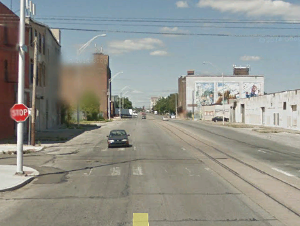 KMJ was responsible for the Traffic Control plans for this 1.8-mile roadway segment. KMJ developed a sequence of construction with consideration for both roadway and green stormwater infrastructure (GSI) improvements, as well as ensuring pedestrian and truck access to businesses throughout construction. KMJ developed Traffic Control plans adhering to PennDOT and City of Philadelphia standards along with detour plans where necessary. In addition, KMJ designed 24 ADA Curb Ramps at the intersections of Cumberland Street, Dauphin Street, and Susquehanna Street on American Street. The curb ramps are designed to meet PennDOT and City of Philadelphia standards.
KMJ was responsible for the Traffic Control plans for this 1.8-mile roadway segment. KMJ developed a sequence of construction with consideration for both roadway and green stormwater infrastructure (GSI) improvements, as well as ensuring pedestrian and truck access to businesses throughout construction. KMJ developed Traffic Control plans adhering to PennDOT and City of Philadelphia standards along with detour plans where necessary. In addition, KMJ designed 24 ADA Curb Ramps at the intersections of Cumberland Street, Dauphin Street, and Susquehanna Street on American Street. The curb ramps are designed to meet PennDOT and City of Philadelphia standards.
City of Philadelphia TEDS Citywide 105 Preliminary Design, ADA Ramp Design
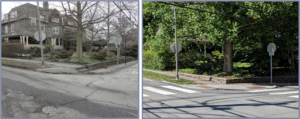
KMJ designed a total of 54 ADA curb ramps, in the Chestnut Hill section of Philadelphia to comply with both PennDOT and the City of Philadelphia standards. The historical nature of the area presents design challenges, including converting stairs to an ADA compliant ramp and small retaining wall. Close coordination between and among all parties, including the homeowner was essential for successful implementation of improvements in this area.
KMJ prepared for and participated in a public open house to inform local residents and business owners of the project and received feedback. KMJ will also participate in individual meetings with property owners potentially affected by ADA ramp designs.
City of Philadelphia Roosevelt Boulevard Multimodal Corridor Program
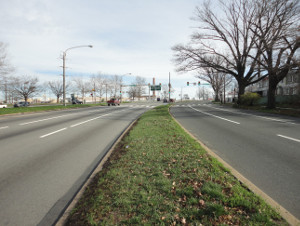
The City of Philadelphia Department of Streets has undertaken the robust effort to transform the bustling yet problematic Roosevelt Boulevard to a modern multimodal transportation corridor. An envisioned new corridor which would ensure that travelers on the Boulevard as well as the surrounding communities have safe, reliable, and diverse opportunities to access neighborhood and regional amenities. KMJ was responsible for preparing the Synchro Model for 38 complex intersections along the Roosevelt Boulevard Corridor, between Broad Street and Devereaux Street.
Amtrak 30th Street Station Master Plan
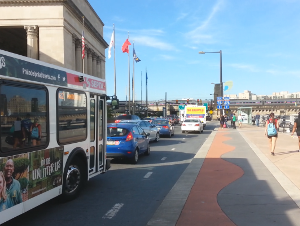
AMTRAK, Drexel University, and Brandywine Realty Trust joined together to prepare a 30th Street Station District Joint Master Plan. The Master Plan took into account development in and around the 30th Street Station area, including Drexel University’s Innovation Neighborhood. The consulting team evaluated both the existing and project future conditions with emphasis on multi-modal transportation in hopes to lessen congestion in the future. KMJ was responsible for evaluating the current traffic conditions, including the interaction with vehicles, bicycles and pedestrians in the area surrounding 30th Street Station.
PennDOT District 6 – I-95 Central and South Philadelphia Project
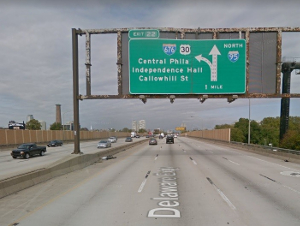
PennDOT has been working to reconstruct I-95 in Bucks, Philadelphia, and Delaware counties. The section of I-95 in Philadelphia County between I-676 and Broad Street has many unique challenges in the design phase, including the proximity of Columbus Boulevard and the proposed I-95 CAP Project (construction of a waterfront park capping I-95). The project aims to provide PennDOT with a design that will maintain access for all interstate and local road users, create a roadway network that will accommodate future growth and allow for the inclusion of the I-95 CAP Project. KMJ is responsible for conducting I-95 and I-76 freeway, ramp and weaving segment analysis for existing conditions and multiple build alternatives for the weekday morning and afternoon peak hours.
Outreach
American Street Improvement Project – Public Involvement
Cottman Avenue Improvement Project
Island Avenue Improvement Project
The Eastern Transportation Coalition, ITS Program Management, Administrative and Technical Support
American Street Improvement Project – Public Involvement

The City of Philadelphia Department of Streets teamed with the Philadelphia Water Department to design the American Street Improvement Project. The project extends nearly two miles from Girard Avenue to Indiana Avenue. KMJ provided public and stakeholder engagement, Traffic Control Plans and ADA Curb Ramp Design Services for this contract. KMJ’s role in the stakeholder engagement aspect was to provide effective and efficient coordination for the City Project Team, multi-agency Project Steering Committee and the public by facilitating all meetings which include Lunchtime Business Meetings and six Public Open Houses. KMJ ensured strong communication by creating an online collaborative tool for file sharing, calendar management, and project updates. More than 20 stakeholder-related meetings were held during the 15-month project duration.
Cottman Avenue Improvement Project
KMJ was responsible for project outreach. KMJ, teamed with Michael Baker and various City agencies including Streets Department, Commerce Department, Philadelphia Water Department, and the Philadelphia City Planning Commission, coordinated with the stakeholders to gather their input on issues and the plans as they are developed. In the virtual environment, KMJ arranged, invited and hosted interactive stakeholder meetings and live project presentations. KMJ also assisted in the development of the project website including content, layout and translation. KMJ coordinated a separate interpreted virtual session for the local Chinese community. In addition, KMJ is completing a signal design for the intersection of Rupert Street /Cottman Avenue in accordance with both City of Philadelphia and PennDOT standards.
Island Avenue Improvement Project

KMJ was responsible for project outreach. Outreach and engagement with the key stakeholders and community enabled them to learn about the project and provide their input so that the improvements can serve and improve the community. Outreach included one-on-one meetings, stakeholder-focused meetings and public open-house style events throughout this design project. KMJ coordinated with the Streets Department and the design team to ensure that the information being presented was consumable to the stakeholders.
KMJ also designed 64 ADA curb ramps and three bicycle ramps over 11 intersections on the Island Avenue corridor as well as four SEPTA trolley platforms at Island Avenue/Lindbergh Avenue and Island Avenue/Tanager Street. These were the first level boarding trolley platforms (also accommodating new trolleys) designed in the City of Philadelphia. Close coordination between the Streets Department, PennDOT, SEPTA and the project team was critical for successful implementation of improvements in this area. All design elements comply with both PennDOT and the City of Philadelphia standards.
The Eastern Transportation Coalition, ITS Program Management, Administrative and Technical Support
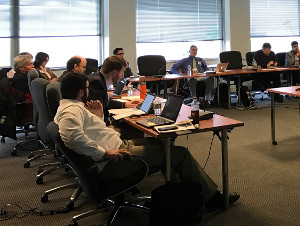 The Eastern Transportation Coalition is an alliance of more than 50 transportation agencies, toll authorities and related organizations stretching from Maine to Florida, and west including Alabama, Tennessee and Kentucky. The Coalition has a mission to improve multi-modal transportation services through information sharing and coordinated management and operations with the goals of improving mobility for people and goods, enhancing safety for all travelers, and improving the economic vitality of the region.
The Eastern Transportation Coalition is an alliance of more than 50 transportation agencies, toll authorities and related organizations stretching from Maine to Florida, and west including Alabama, Tennessee and Kentucky. The Coalition has a mission to improve multi-modal transportation services through information sharing and coordinated management and operations with the goals of improving mobility for people and goods, enhancing safety for all travelers, and improving the economic vitality of the region.
Software and Systems Training, Testing and Support
National Performance Management Research Data Set
PennDOT Capital Planning Tool Hosting, Support and Maintenance
National Performance Management Research Data Set
 The Center of Advanced Transportation Technology (CATT Lab) at the University of Maryland, along with INRIX, KMJ Consulting, Inc., and others provide transportation administrators with data and technical support to accurately pinpoint where infrastructure improvements are needed most. The CATT Lab, as the primary contractor, will operate the data portal and analytics suites that provide users with data. The Map-21 rule-making features easy-to-use tools and dashboards to understand implications of each proposed requirement for each agency’s local area. INRIX is providing historic-time location and speed data, while TTI conflates traffic data shapefiles with GIS elements from the national highway system (NHS) Highway Performance Monitoring System (HPMS) dataset. KMJ is responsible for Tier I technical support and several project management tasks. NPMRDS is used by various states and metropolitan planning organizations (MPOs) to monitor system performance. NPMRDS provides free extensive and dependable data for passenger and economic freight roadway work across the National Highway System.
The Center of Advanced Transportation Technology (CATT Lab) at the University of Maryland, along with INRIX, KMJ Consulting, Inc., and others provide transportation administrators with data and technical support to accurately pinpoint where infrastructure improvements are needed most. The CATT Lab, as the primary contractor, will operate the data portal and analytics suites that provide users with data. The Map-21 rule-making features easy-to-use tools and dashboards to understand implications of each proposed requirement for each agency’s local area. INRIX is providing historic-time location and speed data, while TTI conflates traffic data shapefiles with GIS elements from the national highway system (NHS) Highway Performance Monitoring System (HPMS) dataset. KMJ is responsible for Tier I technical support and several project management tasks. NPMRDS is used by various states and metropolitan planning organizations (MPOs) to monitor system performance. NPMRDS provides free extensive and dependable data for passenger and economic freight roadway work across the National Highway System.
PennDOT Capital Planning Tool Hosting, Support and Maintenance
KMJ used proven visual design techniques to train and educate users in the most compelling and efficient way possible. KMJ created rich, intuitive training guides and produced a suite of instructional videos for users of the Capital Planning tool. Using tools like Functionize, KMJ has developed two suites of automated smoke and regression tests to ensure full functionality is present after bugfixes, feature enhancements, and patches. KMJ collaborates with the CS development team in Jira to ensure feature enhancements are bug-free and helps manage and prioritize ticket backlogs.